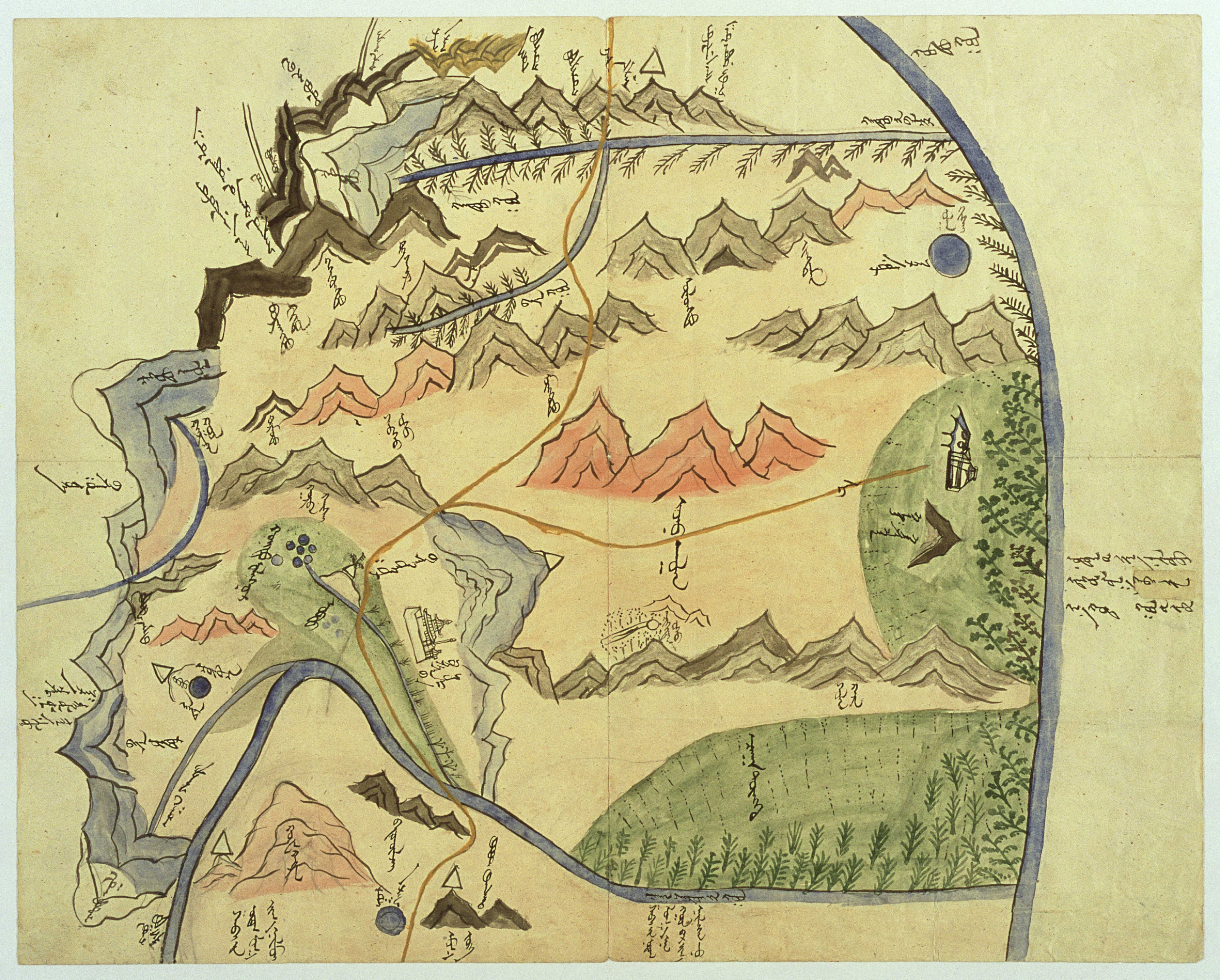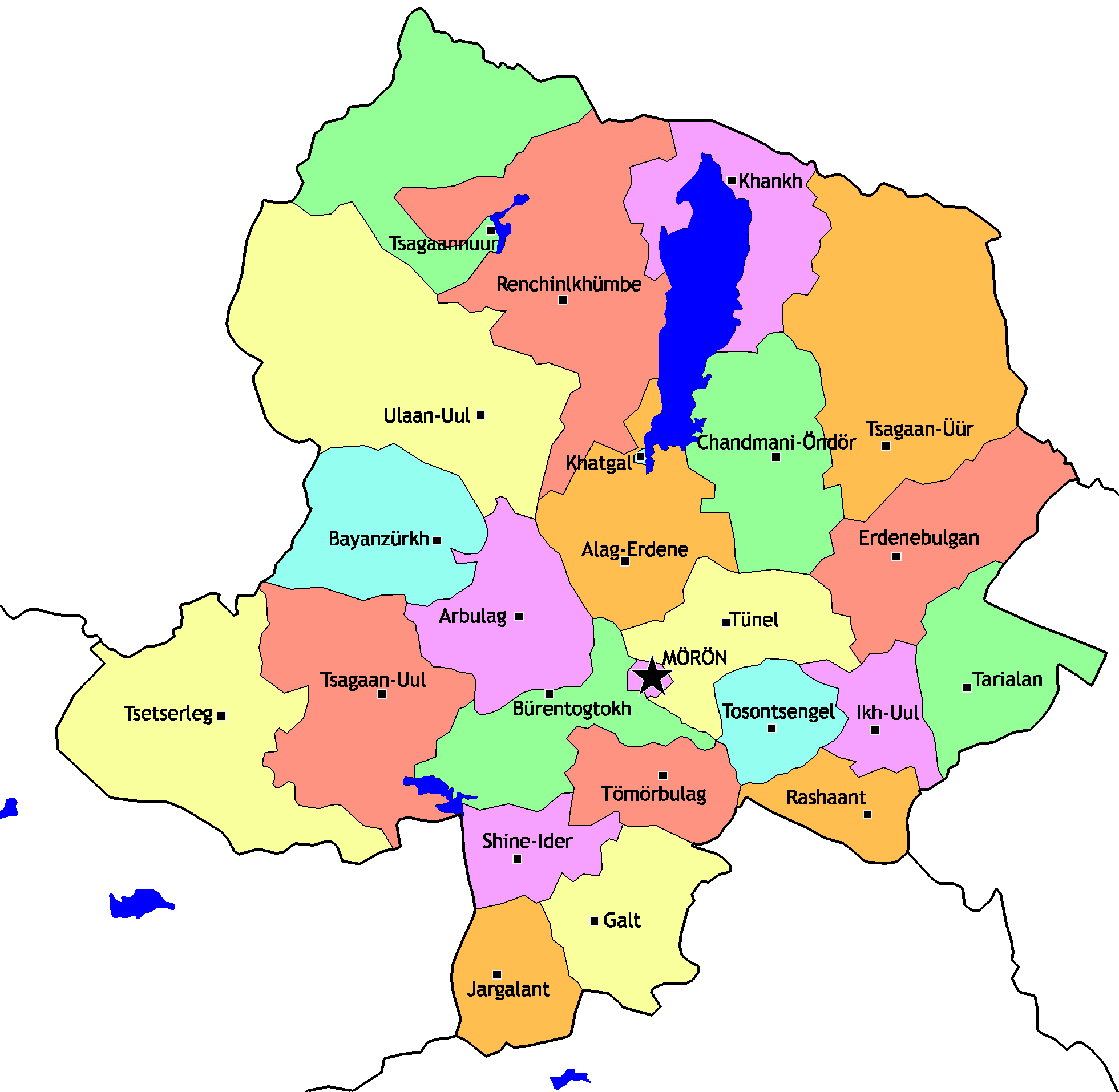|
Altai Uriankhai
The Altai Uriankhai ( Mongolian Cyrillic: , ; ) refers to a Mongol tribe around the Altai Mountains that was organized by the Qing dynasty. They now form a subgroup in western Mongolia and eastern Xinjiang. The Uriyangkhai or Uriankhai people first appeared in the 7th century as one of the people in Mongolia (Legend of the Erkune kun). The Mongolian term ''Uriankhai'' (''Uriyangkhai'') had been applied to all Samoyed, Turkic or Mongol people to the north-west of Mongolia in the 17th century. The Uriyangkhai in this sense were first subjugated by the Khotgoid Khalkha and then by the Dzungars. In the mid 14th century, they lived in Liaoyang province of modern China. After the rebellion of the northern Uriankhai people, they were conquered by Dayan Khan in 1538 and mostly annexed by the northern Khalkha. Second group of Uriankhai (Uriankhai of the Khentii Mountains) lived in central Mongolia and they started moving to the Altai Mountains in beginning 16th century.A.Ochi ... [...More Info...] [...Related Items...] OR: [Wikipedia] [Google] [Baidu] |
Oirat Language
Oirat ( Clear script: , , ; Kalmyk: , ; Khalkha Mongolian: , ) is a Mongolic language spoken by the descendants of Oirat Mongols, now forming parts of Mongols in China, Kalmyks in Russia and Mongolians. Largely mutually intelligible to other core Central Mongolic languages, scholars differ as to whether they regard Oirat as a distinct language or a major dialect of the Mongolian language. Oirat-speaking areas are scattered across the far west of Mongolia, the northwest of ChinaSečenbaγatur et al. 2005: 396-398 and Russia's Caspian coast, where its major variety is Kalmyk. In China, it is spoken mainly in Xinjiang, but also among the '' Deed Mongol'' of Qinghai and Subei County in Gansu. In all three countries, Oirat has become variously endangered or even obsolescent as a direct result of government actions or as a consequence of social and economic policies. Its most widespread tribal dialect, which is spoken in all of these nations, is Torgut.Svantesson et al. 2005: 1 ... [...More Info...] [...Related Items...] OR: [Wikipedia] [Google] [Baidu] |
Dzungars
The Dzungar people (also written as Zunghar; from the Mongolian words , meaning 'left hand') were the many Mongol Oirat tribes who formed and maintained the Dzungar Khanate in the 17th and 18th centuries. Historically they were one of major tribes of the Four Oirat confederation. They were also known as the Eleuths or Ööled, from the Qing dynasty euphemism for the hated word "Dzungar" and also called " Kalmyks". In 2010, 15,520 people claimed "Ööled" ancestry in Mongolia. An unknown number also live in China, Russia and Kazakhstan. Origin The Dzungars were a confederation of several Oirat tribes that emerged in the early 17th century to fight the Altan Khan of the Khalkha (not to be confused with the better-known Altan Khan of the Tümed), Tümen Zasagt Khan, and later the Manchu for dominion and control over the Mongolian people and territories. This confederation rose to power in what became known as Dzungaria between the Altai Mountains and the Ili Valley. Initia ... [...More Info...] [...Related Items...] OR: [Wikipedia] [Google] [Baidu] |
Khovd Province
Khovd ( mn, Ховд, Howd, ) is one of the 21 aimags (provinces) of Mongolia, located in the west of the country. Its capital is also named Khovd. The Khovd province is approximately 1,580 km from Ulaanbaatar, Mongolia's capital. It takes its name from the Khovd River, which is located in this province. Population Khovd is distinguished by its multi-cultural population. It is home to more than 17 nationalities and ethnicities. Each of these groups has its own distinct traditional dwelling and settlement pattern, dress and other cultural distinctions, literary, artistic, and musical traditions. The Khovd aimag population growth stopped in 1991, then migration out of the aimag (approx. 20,000 in 1992-2004) compensated the natural increase and confined aimag’s population within the limits of 87 thousand to 92 thousand since. Climate Khovd is notorious for its harsh weather, for temperatures regularly reach as high as during summer and as low as during winter. The ... [...More Info...] [...Related Items...] OR: [Wikipedia] [Google] [Baidu] |
Amban
Amban (Manchu and Mongol: ''Amban'', Tibetan: ་''am ben'', , Uighur:''am ben'') is a Manchu language term meaning "high official", corresponding to a number of different official titles in the imperial government of Qing China. For instance, members of the Grand Council were called ''Coohai nashūn-i amban'' in the Manchu language and Qing governor-generals were called ''Uheri kadalara amban'' (). The most well-known ambans were the Qing imperial residents (Manchu: ''Seremšeme tehe amban''; ; Tibetan: ''Ngang pai'') in Tibet, Qinghai, Mongolia and Xinjiang, which were territories of Qing China, but were not governed as regular provinces and retained many of their existing institutions. The Qing imperial residents can be roughly compared to a European resident (also known as resident commissioners) in a protectorate (e.g. a British Indian princely state), the real rapport depending on historical circumstances rather than a general job description for every amban, while ... [...More Info...] [...Related Items...] OR: [Wikipedia] [Google] [Baidu] |
Altay People
The Altai people ( alt, Алтай-кижи, Altai-kizhi), also the Altaians ( alt, Алтайлар, Altailar), are a Turkic ethnic group of indigenous peoples of Siberia mainly living in the Altai Republic, Russia. Several thousand of the Altaians also live in Mongolia (Mongolian Altai Mountains) and China ( Altay Prefecture, northern Xinjiang) but are officially unrecognized as a distinct group and listed under the name "Oirats" as a part of the Mongols, as well as in Kazakhstan where they number around 200. For alternative ethnonyms see also Tele, Black Tatar, and Oirats. During the Northern Yuan Dynasty of Mongolia, they were ruled in the administrative area known as Telengid Province. Ethnic groups and subgroups The Altaians are represented by two ethnographic groups: *The Southern Altaians, who speak the Southern Altai language with its dialects, include the Altai-Kizhi, the Teleuts, the Telengits, and used to include the Telesy who are now assimilated within the ... [...More Info...] [...Related Items...] OR: [Wikipedia] [Google] [Baidu] |
Tannu Uriankhai
Tannu Uriankhai ( tyv, Таңды Урянхай, ; mn, Тагна Урианхай, Tagna Urianhai, ; ) is a historical region of the Mongol Empire (and its principal successor, the Yuan dynasty) and, later, the Qing dynasty. The territory of Tannu Uriankhai largely corresponds to the modern-day Tuva Republic of the Russian Federation, neighboring areas in Russia, and a small part of the modern state of Mongolia. ''Tannu'' designates the Tannu-ola Mountains in the region. ''Uriankhai'' was the Mongolian name for the Tuvans (and accordingly their realm), which meant "the people living in the woods" (). After Outer Mongolia declared independence from the Qing dynasty and Republic of China in the early 20th century, the region of Tannu Uriankhai increasingly came under Russian influence and finally became an independent communist state, the Tuvan People's Republic, which was annexed by the Soviet Union in 1944. Sovereignty over the area has not been officially renounced by the R ... [...More Info...] [...Related Items...] OR: [Wikipedia] [Google] [Baidu] |
Khövsgöl Lake
Khövsgöl may refer to several locations in Mongolia: *Lake Khövsgöl *Khövsgöl Province Khövsgöl ( mn, Хөвсгөл) is the northernmost of the 21 aimags (provinces) of Mongolia. The name is derived from Lake Khövsgöl. Geography and history The round-topped Tarvagatai, Bulnain and Erchim sub-ranges of the Khangai massif dom ... * Khövsgöl sum, in Dornogovi Province {{geodis ... [...More Info...] [...Related Items...] OR: [Wikipedia] [Google] [Baidu] |
Dzungar Khanate
The Dzungar Khanate, also written as the Zunghar Khanate, was an Inner Asian khanate of Oirat Mongol origin. At its greatest extent, it covered an area from southern Siberia in the north to present-day Kyrgyzstan in the south, and from the Great Wall of China in the east to present-day Kazakhstan in the west. The core of the Dzungar Khanate is today part of northern Xinjiang, also called Dzungaria. About 1620 the western Mongols, known as the Oirats, united in Dzungaria. In 1678, Galdan received from the Dalai Lama the title of ''Boshogtu Khan'', making the Dzungars the leading tribe within the Oirats. The Dzungar rulers used the title of Khong Tayiji, which translates into English as "crown prince". Between 1680 and 1688, the Dzungars conquered the Tarim Basin, which is now southern Xinjiang, and defeated the Khalkha Mongols to the east. In 1696, Galdan was defeated by the Qing dynasty and lost Outer Mongolia. In 1717 the Dzungars conquered Tibet, but were ... [...More Info...] [...Related Items...] OR: [Wikipedia] [Google] [Baidu] |
Northern Yuan Dynasty
The Northern Yuan () was a dynastic regime ruled by the Mongol Borjigin clan based in the Mongolian Plateau. It existed as a rump state after the collapse of the Yuan dynasty in 1368 and lasted until its conquest by the Jurchen-led Later Jin dynasty in 1635. The Northern Yuan dynasty began with the retreat of the Yuan imperial court led by Toghon Temür (Emperor Huizong of Yuan) to the Mongolian steppe. Although Yuan authority in most of China proper collapsed by 1368, Yuan loyalists in Yunnan led by Basalawarmi survived until their defeat by the Ming in 1382. This period featured factional struggles and the often only nominal role of the Great Khan. Dayan Khan and Mandukhai Khatun reunited the Mongol tribes in the 15th century. However, the former's distribution of his empire among his sons and relatives as fiefs caused the decentralization of the imperial rule. Despite this decentralization, a remarkable concord continued within the Dayan Khanid aristocracy, an ... [...More Info...] [...Related Items...] OR: [Wikipedia] [Google] [Baidu] |
Khövsgöl Province
Khövsgöl ( mn, Хөвсгөл) is the northernmost of the 21 aimags (provinces) of Mongolia. The name is derived from Lake Khövsgöl. Geography and history The round-topped Tarvagatai, Bulnain and Erchim sub-ranges of the Khangai massif dominate the south and southwest of the largely mountainous province, and north and west of Lake Khövsgöl, lie the alpine Khoridol Saridag, Ulaan Taiga, and Mönkh Saridag mountains. The center and eastern parts of the province are less mountainous, but still hilly. The region is well known in Mongolia for its natural environment, and Lake Khövsgöl is one of the country's major tourist attractions. The largest forests of Mongolia are located around and to the north of the lake, extending the South Siberian taiga Taiga (; rus, тайга́, p=tɐjˈɡa; relates to Mongolic and Turkic languages), generally referred to in North America as a boreal forest or snow forest, is a biome characterized by coniferous forests consisting mo ... [...More Info...] [...Related Items...] OR: [Wikipedia] [Google] [Baidu] |
Khentii Mountains
The Khentii Mountains ( mn, Хэнтийн нуруу) are a mountain range in the Töv and Khentii Provinces in North Eastern Mongolia. Geography The mountain chain overlaps the Khan Khentii Strictly Protected Area and includes Mongolia's sacred mountain, Burkhan Khaldun, which is associated with the origin of Genghis Khan. The range forms the watershed between the Arctic Ocean (via Lake Baikal) and the Pacific Ocean basins. Rivers originating in the range include the Onon, Kherlen, Menza and Tuul. A northern extension of the Khentii Mountains forms a range of the same name which is part of the Khentei-Daur Highlands in the Transbaikalia Krai of Russia. History The legendary Mongol Genghis Khan ''Chinggis Khaan'' ͡ʃʰiŋɡɪs xaːŋbr /> Mongol script: ''Chinggis Qa(gh)an/ Chinggis Khagan'' , birth_name = Temüjin , successor = Tolui (as regent) Ögedei Khan , spouse = , issue = , house = Borjigin ... is thought to have chosen ... [...More Info...] [...Related Items...] OR: [Wikipedia] [Google] [Baidu] |





